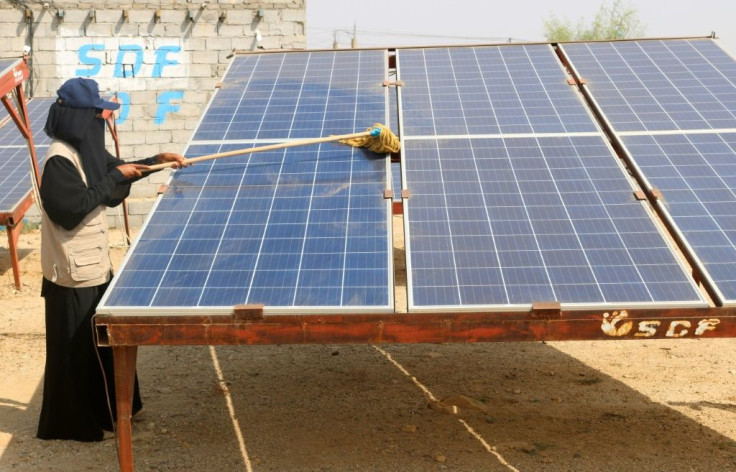As Hurricane Season Ends In Tragedy, Solar Microgrids Offer A More Resilient Future

Meteorologists declared the end of hurricane season this week, capping a 2023 season that was relatively quiet in the Atlantic. Still, a Category-5 storm that battered the southwestern coast of Mexico on October 25 resulted in the death or disappearance of over 100 people around the resort city of Acapulco.
Hurricane Otis strengthened from a tropical storm to a maximum-strength hurricane over just 36 hours, striking a region of Mexico that has historically avoided major storms. The event shed light on the ever-increasing effects of climate change, and their disproportionate impact on regions with deficient energy infrastructure and emergency services.
In Acapulco, over 10,000 utility poles were destroyed and an electrical plant was damaged during the hurricane passage. Power and communications were not fully restored until 8 days after the storm. The extended blackout led to the looting of gasoline. Area hospitals were forced to pause operations and transfer hundreds of patients to facilities elsewhere in the country.
Acapulco's electrical grid's unpreparedness for a major storm enhanced the total damages from Hurricane Otis, lending momentum to the ongoing movement to reconfigure electrical systems in places most vulnerable to the effects of climate change.
Disaster Resiliency
The use of solar microgrids is one energy plan to bolster preparedness for hurricanes in the Caribbean. It could also prove instrumental for developing countries in their effort to reduce the impacts of major storms.
Solar microgrids are discrete collections of solar panels, typically anchored to a concrete base, designed to provide electricity to a handful of buildings, or even to just a single customer. Microgrids can connect to the centralized grid and redistribute excess power under normal circumstances and serve as a source of backup power in emergencies.
Microgrids are inherently decentralized, and can withstand multiple localized outages in a severe storm without system failure. Traditional oil and gas-powered grids that rely on centralized generating stations can be immobilized by a single downed wire, as was Acapulco's case during Hurricane Otis.
Solar microgrids have already proven to be effective at a smaller scale. Clean energy non-profit Rocky Mountain Institute (RMI) introduced two microgrids in the Bahamas after Hurricane Dorian in 2019. According to a World Bank report, the microgrids have saved the Bahamas' state electrical utility approximately $1 million annually since installation in 2021, driving down the islands' disproportionately high electrical prices.
RMI has since expanded its active microgrid operations in the Caribbean to include two facilities in Saint Vincent and the Grenadines, as well as one in Puerto Rico.
The Caribbean experience with solar microgrids has been uniquely tailored to small island states with limited energy resources and a high risk of extreme weather events. The system technology has been proposed as a source of backup power even for countries that have more diversified energy mixes, but still have certain regions and populations at risk of extreme weather events.
The Climate Finance Challenges Facing Microgrids
Despite their benefits, solar microgrids' adoption by private sector and state actors beyond the scope of non-profit action has been limited.
The worldwide clean energy transition is estimated to cost trillions of dollars, with the exact figure depending on its speed and scope. Countries that are disproportionately vulnerable to climate change, which are prospective locations for wide-scale solar microgrids, also find themselves disproportionately indebted, and need external financing to execute new energy projects.
Many ideal microgrid adoption locations are considered "middle income" by the standards of international lending institutions, like the majority of the tourism-dependent Caribbean nations, and can't access development funds reserved for poorest countries. According to the U.N., private investment channels for renewable energy technologies have been inadequate in recent years.

Some high-profile proposals have been introduced to address the finance limitations for middle-income countries vulnerable to climate change.
The Bridgetown Initiative, the plan authored by Barbadian Prime Minister Mia Mottley, calls on the International Monetary Fund to release $650 billion in special drawing rights dedicated to loans and equity investments in green energy technology in lower-income countries.
The Bridgetown Initiative aims to "provide finance at a scale commensurate with the challenge of global warming without the taxpayers of any country having to write big new cheques," Avinash Persaud, advisor to PM Mottley and co-author of the plan, wrote in The Economist in December.
The Bridgetown Initiative garnered rhetorical support from key figures at last November's COP 27, including French President Emmanuel Macron and IMF Managing Director Kristalina Georgieva. This support has yet to ultimately materialize into substantial action, highlighting the challenge of implementing large-scale energy transformations in places with limited fiscal leeway.
© Copyright IBTimes 2025. All rights reserved.






















